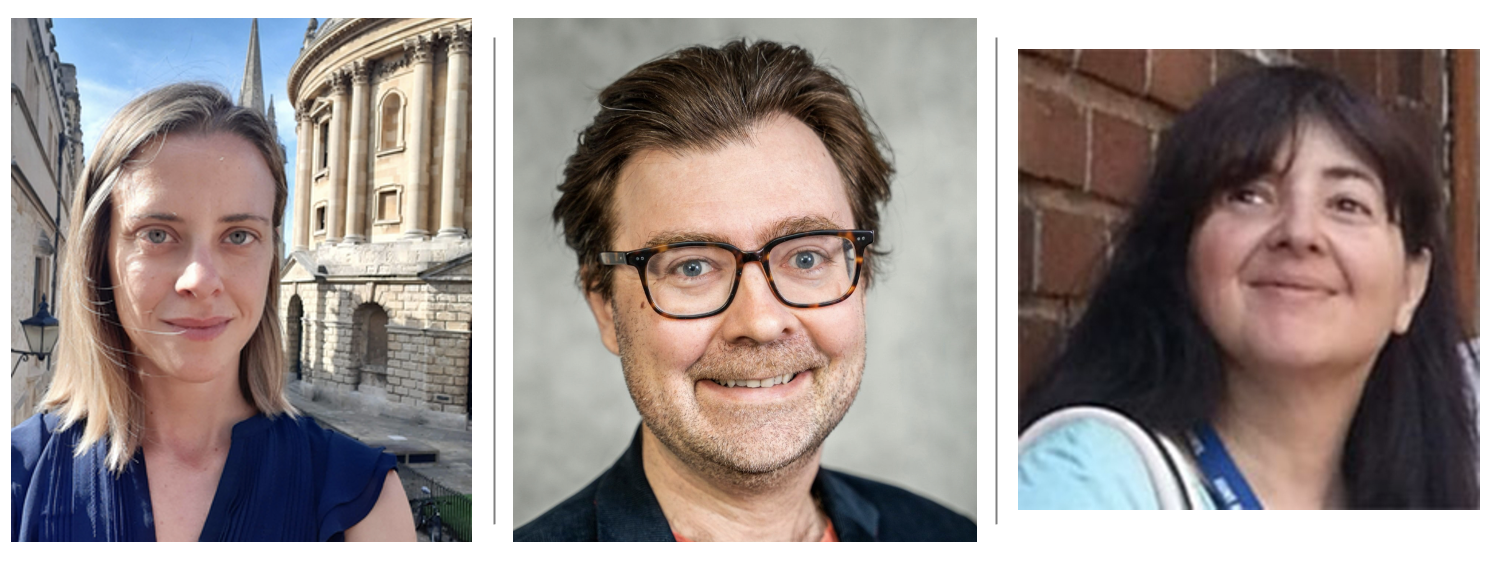The Heritage Science theme leads successful workshop on how to secure beamtime
Pictured: Anna Fedrigo, ILL, Mikael Fauvelle, Lund University, and Lucia Mancini from ZAG . They are all members of the Heritage Science theme.
Securing beamtime access is often a long and quite tedious procedure – but one that is crucial to get right to be able to perform X-ray and neutron-based experiments. To help researchers write a well-conceived proposal, and avoid common pitfalls, the Heritage Science theme organised a workshop that explained the whole process.
The workshop, which took place in mid-February was very well-attended - with over 50 participants from across Europe and many within Sweden. They came from different backgrounds and included people with considerable experience using beamlines in their research, as well as many people who were interested in the potential that synchrotrons and neutrons have for their work but who had not previously used a beamline.
– We focused on imaging applications since it is a technique that is more immediate to comprehend for a non-specialist. However, many of the points we discussed are also valid more generally, both in other techniques and fields of science, says theme member Anna Fedrigo, instrument scientist at ILL, Institut Laue-Langevin, and one of the event organisers.
She, along with Lucia Mancini, senior researcher at the Slovenian National Building and Civil Engineering Institute (ZAG) of Ljubljana, gave two introductory talks – focusing on neutron imaging applications, and on X-ray imaging applications, respectively. They are both very happy with how the event turned out.
Theme leader Mikael Fauvelle agrees:
– The intense and wide-ranging interest shows that while many people are interested in synchrotron and neutron applications for their research, there are still considerable barriers for entry due to unfamiliarity with the application process within cultural heritage fields, says Mikael Fauvelle, theme leader, and researcher at the Archaeology Department, Lund University.
– It is precisely this lack of familiarity with the application process that we were trying to address through this workshop. Anecdotally, I have heard from many researchers within Lund that they would love to use MAX IV beamlines in their research but have no idea where to start with an application. It was great to see some of these people in attendance at the event.
Practical tips and tricks for beamtime access
The second part of the webinar was devoted to a tutorial on tips and tricks for beamtime access followed by a discussion session.
– It was great to see such interaction at the end, with several questions and comments from the participants. As we had really focused on giving simple, practical tips, it was nice to see that people responded well to the content, says theme member Lucia Mancini, organiser of the event, and having operated as beamline scientist at the Elettra synchrotron for more than 20 years.
– Several people also commented that they liked the workshop, and that they found it very useful. It was a great initiative, and a pleasure to do it from my point of view!
Next steps for the theme
Building on the success of the workshop, the theme is now planning to host similar efforts in the spring. Mikael Fauvelle and his theme colleagues are also planning to bring some guest researchers to Lund, to further widen the theme’s networks.
– Now, we are getting properly started with our activities. In addition, we are planning to host research focused symposia in the autumn, says Mikael Fauvelle.

